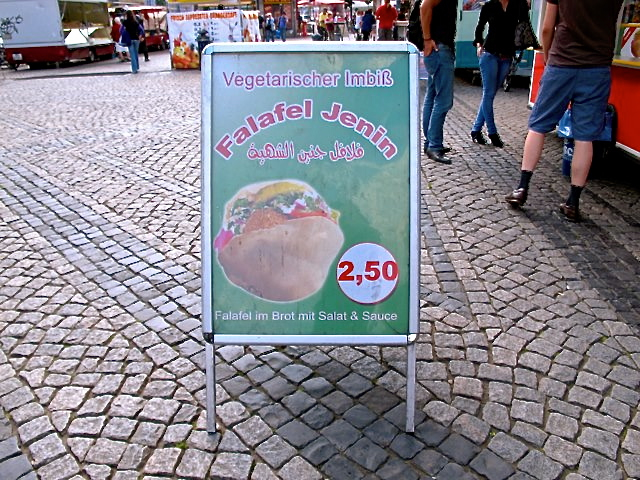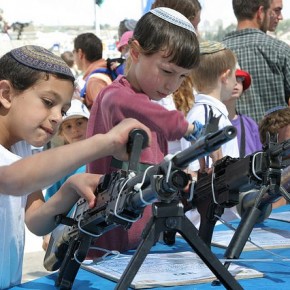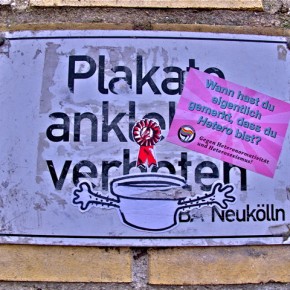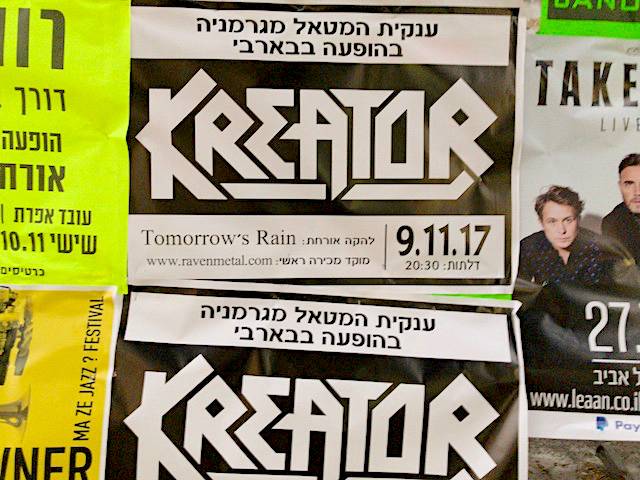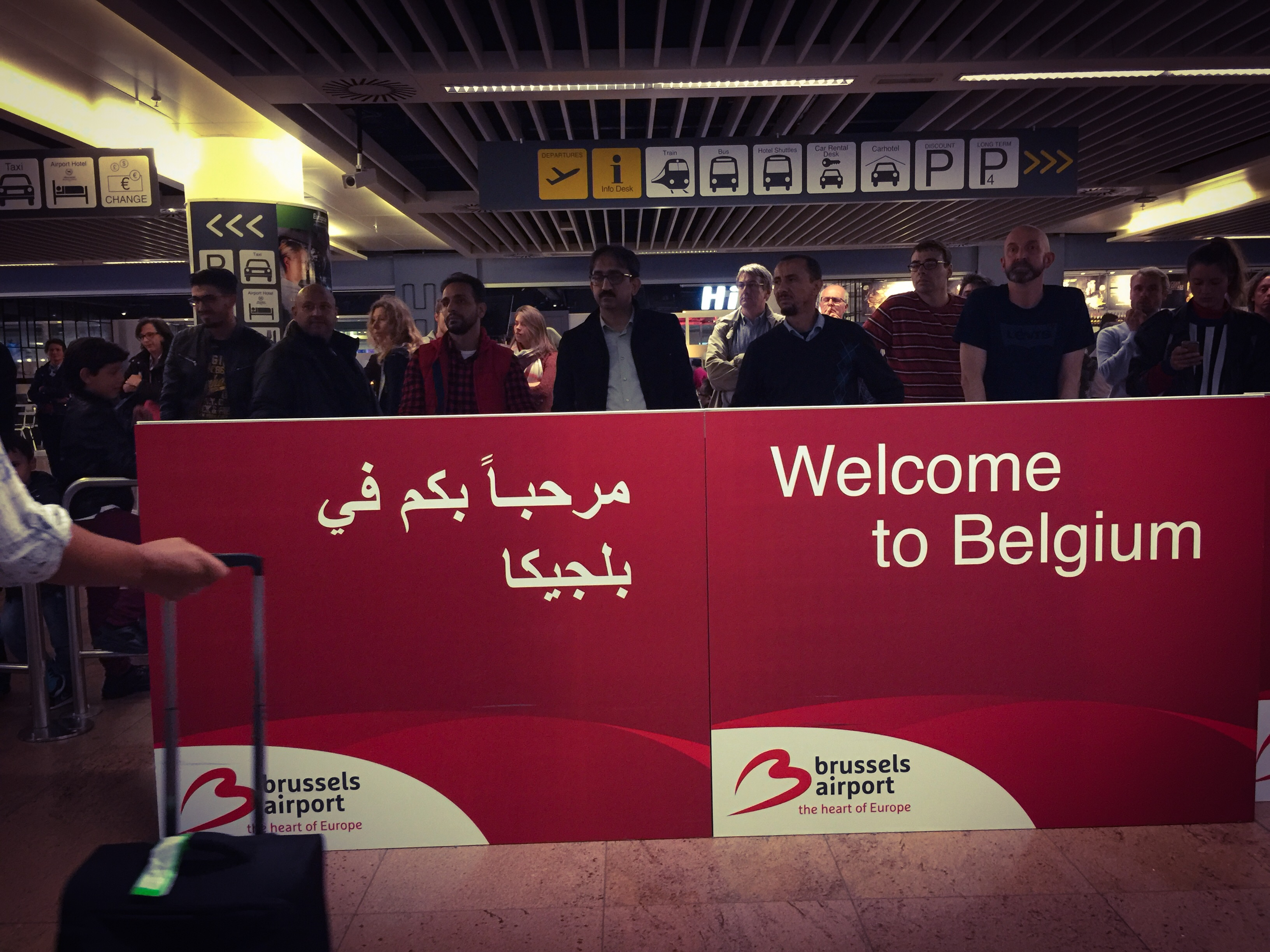Food is not what you normally think of while being tear gassed. In fact, it’s kind of the opposite, since the reaction your body has to the gas is to retch. If you had anything in your stomach, watch out because it might not be there anymore. I know I wasn’t thinking about food the last time I was gassed. Well, not any more than usual.
I was over the Green Line, in the West Bank village of Bil’in for their weekly anti-occupation demonstration. My friend and I had gotten a ride in with a crew of Israeli activists, which was interesting in and of itself. We were picked up at the main bus station in Tel Aviv by friends of friends, well-known folk who had been doing this for years.
Crossing into Palestine – Bil’in is near Ramallah, the seat of the Palestinian Authority – we had to go through an army checkpoint. We knew why we were there. The twenty-year-old Israel Defense Force soldiers knew why we were there. Still, we all played a part in a ritual ruse, and nobody tipped their hand too much. Just another Friday on the way to Bil’in.
I had been serving as translator between the driver, a grizzled activist in his 50s or 60s, who had been active with leftwing groups stretching back decades, and my friend Hexe who spoke no Hebrew. Our driver was keen on making sure they knew what was going on, and refused to take yes for an answer.
We let him prattle on, partially because he was driving and partially because his stories were actually really interesting. Apparently he had worked with Matzpen, one of the first Israeli anti-Zionist political groups, during the 1970s and 1980s. He had a box of books they had put out in the back of the car and implored me to take a copy of the translated works of the Ukrainian anarchist Nestor Makhno. For real. I still have the book somewhere.
When we finally got to Bil’in we wandered into a house that had been set up for international activists. Some kids tried to sell us Palestinian-themed trinkets. I practiced my shoddy Arabic while haggling with them. We had passed a couple markets on the way. I made a mental note to go into them after the demonstration was over. I was not thinking about tear gas or rubber bullets. My thoughts were on falafel.

The demonstration itself was almost more ceremonial than anything else. It’s been going on every week since 2005 and everyone, from the soldiers to the internationals to the 10-year-olds gathering rocks next to me, everyone plays a part. This is how it happens: there’s a procession down a dirt road to a frontier gate, that separates Israel and Palestine. The issue is that the land on the other side of the gate used to belong to people in the village until Israel annexed it. The stated purpose of the demonstration is to demand to be let through that gate, and into the fields beyond.
At the head of the march are Arabs in their teens to thirties. Behind them are a mixture of non-Arabs and older Arab men. There are very few Palestinian women at the demonstration, which is not to say they don’t take part in the anti-occupation actions. They’re just less likely to be a part of the public demonstrations. To the sides, amongst the olive trees that make up the land, are Arab kids with slingshots. Their job is to basically start things off, and be a thorn in the side of the soldiers. Interspersed everywhere are photographers and other international media. You can tell the amateurs from the professionals by their attempts at body armor: a helmet with the word JOURNALIST written across the back, or maybe a bright orange vest, like tear gas, can pick and choose who it affects.
Which brings us to the soldiers. The IDF is a conscription-based military, and a majority of the troops are between the ages of eighteen and twenty-three. This is especially true for crap jobs like guard duty on the border at a small Palestinian village in the West Bank. The soldiers at Bil’in were babies, not much older than the teenagers yelling at them and far younger than the old men who were pleading to be allowed onto the land on the other side of that gate.
At some point in this weekly ritual the kids start flinging rocks at the heavily armed and shielded soldiers, setting them off. Someone might burn a tire. Someone else will definitely be holding a Palestinian flag. The photographers won’t know where to aim their cameras first. And that’s where the tear gas and rubber bullets come in. This ritual, like most, is not without an element of pain and suffering. The soldiers don’t target anyone in particular, they just let out their anger on everyone. People are injured. People die. And still, like clockwork, this ritual continues.
I had been tear gassed before but that didn’t make it any better this time around. You feel the gas the most in your throat. It’s this mixture of pain and panic that settles on your windpipe and makes you think that you might never again take a breath without it hurting, assuming you can even keep breathing. Everything smells, tastes, and feels like tear gas. It’s very uncomfortable. Now add to that the fact that the soldiers kept on shooting tear gas canisters and rubber bullets at us.
So what does this all have to do with falafel? Once the demonstration dispersed, Hexe and I found ourselves walking back to the center of town, still coughing up a storm and feeling angry and weak. On some level, I think we were used to demonstrations that have more positive endings; the Sisyphean nature of Bil’in, of the anti-occupation movement in general, is depressing. What do you want when you’re feeling sick and depressed? Comfort foods.
Palestinian falafel is ever so slightly different from the Israeli falafel we had been eating, or the Turkish variety we were getting in Berlin, where I was living at the time. To begin with, the balls themselves are not even that. Traditional Palestinian falafel is cylindrical and flatter. It is also a bit more basic, allowing the core flavors of the chickpeas and garlic to shine though, without being masked by copious salads and sauces.
We each got a falafel and a glass bottle of Made-in-Jordan Coca Cola. It seemed inappropriate to support a multinational company right after participating in this protest, but sometimes it’s hard to care. Especially when you’ve just been tear gassed and shot at. For those reasons exactly, it was one of the best falafels I’ve ever had.
Photographs courtesy of Joel Schalit
